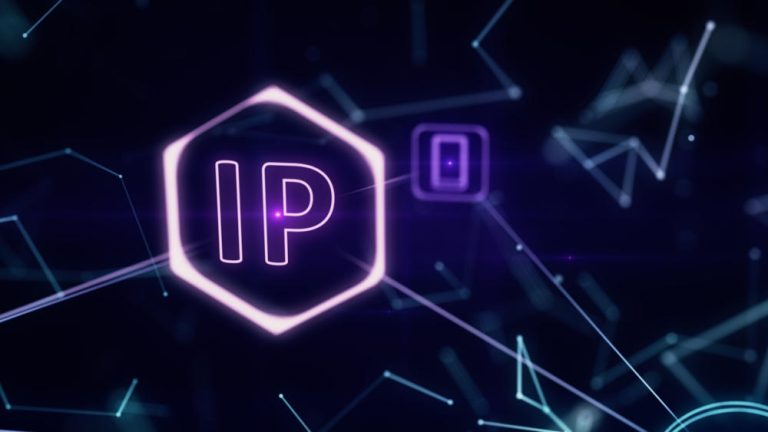Let’s see what the basic things you need to know about the IP address are.
IP comes from Internet Protocol, and it’s a set of rules that makes it possible for devices to communicate over the internet.
A computer’s IP address can be thought of just like a physical address of a house.
When you navigate to this website (that has the domain techie-show.com – here is an explanation of what a domain is), for example, your browser will initiate a request to techie-show.com’s server asking for content. Once the server gets the request, it needs to know where to send the website content. Because of this, the request will contain the asker’s IP address.
And the system that orchestrates this process is called DNS. I’ve written about it here.
What’s the deal with IPv4 and IPv6?
As you now know, IP comes from Internet Protocol. So IPv4 and IPv6 simply refer to different versions of this protocol. IPv4 was implemented in 1983 (I know, right?), and it is still in use today.
The format of IPv4 addresses is four sets of numbers separated by dots. For example: 127.0.0.1 or 8.8.8.8 or 192.168.1.58 and so on. This is a 32-bit format, and it allows for about 4.3 billion unique IP addresses.
And while 4.3 billion might sound like a lot, it turns out it’s not enough!
Enter IPv6.
IPv6 provides some updates over IPv4, including security and privacy improvements, but it also allows for a number made of 39 digits for unique IPv6 IP’s. This is becuase it is in 128-bit format. That means it uses a set of numbers and letters separated by single or double colons (example: 2607:f860:4005:804::200e).
It is important to know that both IPv4 and IPv6 addresses have been used concurrently on the web for over 10 years. The two versions can run in parallel but special measures need to be taken to facilitate the communication of devices running different IP versions.
Static IPs vs dynamic IPs
The concept of dynamic IPs was introduced because of the limited supply of IPv4 addresses. And it’s a very common practice.
Dynamic IP addresses refer to the fact that a device connected to the Internet, is assigned a temporary IP address. This address will change in a given time (usually controlled by the ISP) or on the device (modem/router reboot).
This is also very cost-effective for the ISP instead of assigning each user a permanent or a static IP address (an address that does not change during the contract).
For the average user, this does not matter. He or she will not be affected.
Where it does ‘hurt’, is if you want to host something yourself (like a website or share a Plex server to your friends etc.). But even then, there are solutions using dynamic DNS providers.
Conclusion
And that’s about it!
You now know the basics about IP addresses. And here is something about finding out your IP address or how to hide your IP address.
Found this explanation easy to understand? Please share it!


